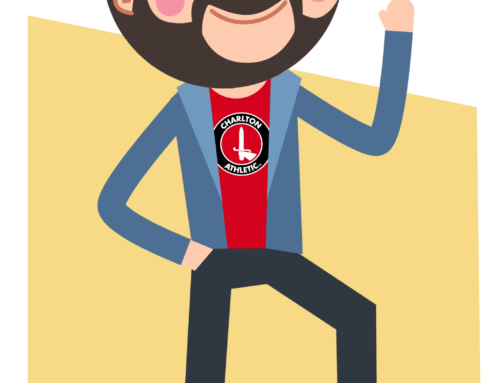![]() Work is changing faster than it has in a generation. Mainly driven by the need for remote working during the Covid pandemic, workplaces are now experimenting with different models of hybrid working. For individuals, this means working part of the time in the office and part-time from somewhere else. For organisations, a hybrid model can also mean a mix of fully on-site and fully off-site employees as well as the hours people work and start/finish times.
Work is changing faster than it has in a generation. Mainly driven by the need for remote working during the Covid pandemic, workplaces are now experimenting with different models of hybrid working. For individuals, this means working part of the time in the office and part-time from somewhere else. For organisations, a hybrid model can also mean a mix of fully on-site and fully off-site employees as well as the hours people work and start/finish times.
Researchers at Microsoft and from around the world have been investigating hybrid work practices and pulling together research to address the new challenges it brings. These are summarised in their Future of Work Report.
This month we take a look at what the report says about the impact of hybrid working on individuals and teams by highlighting six key questions answered by the research. Check back next month for the second part on what the future could hold for your organisation.
Question 1: Is hybrid working here to stay?
It appears that employees strongly prefer hybrid work. A survey in the United Kingdom found 59% preferred a hybrid work model, 18% would rather be in the office full-time, with 23% opting for fully remote (Bloom et al. 2021).
Employers are embracing hybrid working but not to the extent employees would like, although preferences can change. Full-time in-person work is also more persistent than some would believe and of course the only option for some workers.
Despite their preference, as a group, employees have concerns about working away from the office. These include lower socialisation (61%) and lower visibility to leadership (42%) so questions remain: Will employers become more flexible, or will workers come back to the office? Will they quit instead or want the same arrangements in a stronger or weaker labour market?
Question 2. Are people more productive when they work from home?
In a large global survey, 80% of employees reported being as or more productive since going remote, but 54% of business leaders feared productivity was negatively affected (Microsoft WTI 2022). Hybrid work may be able to maximise an individual’s productivity as they are working in a way that’s best for them. However, for employers, this can hinge on having a critical mass in the office, so needs to be managed.
Question 3. Is hybrid working better for work/life balance?
Workers are increasingly recognising the relationship between work and wellbeing, and looking for a greater balance between home and work. Remote working and more autonomy can improve job satisfaction but could lead to people feeling socially isolated and working more.
Stress is costly and can lead to burnout, but workplace interventions can help to reduce the risk of mental and physical health disorders, and consequent reductions in productivity.
Question 4. How can leaders get the most out of a virtual team?
Remote and hybrid team leaders need a focus on relationships to motivate and support virtual team members. Trust is key. Open conversations where everyone can contribute, making it easy to see who is working where, what people have contributed, and improving spontaneous engagement throughout the day, can all be achieved by having the right technology and systems.
These need to work together smoothly, especially if moving between work and home, and should be suitable and accessible for people with a disability.
Question 5. Do virtual meetings have an impact on team communication?
Women’s communication in teams often provides significant leadership and coordination, even if they are not in official roles. Women also said they had more difficulty speaking up in virtual meetings than men.
Meeting-free days improve cooperation, self-reliance, overall work and satisfaction. But having some meetings is essential for coordination and social ties. Some routine meetings can be replaced with text-based chat, but there is a need to manage chat overload. Video meeting fatigue can also be an issue as our brains have more to process, especially if used intensely.
Question 6. How can you make sure your hybrid team stays creative?
Group creativity is not necessarily always at its best when people are together. Individual ideation can be richer because the processes of sharing ideas live can block the flow of thoughts. Tools and systems to aid collaboration are essential.
Chatting informally is obviously harder for remote teams, but crucial for knowledge sharing, trust, morale, and a sense of team culture. Team lunches and socials can help as well as joining meetings early to engage in small talk.
The future for your organisation
For most companies, these six questions would have been unimaginable a few years ago. The answers present challenges as well as opportunities, and they will shape the future of how we work, especially as young people have started careers with hybrid working already in place.
Next month we’ll be looking at what the future could look like for organisations and society.
References
You can read or download the whole Future of Work Report, compiled by researchers at Microsoft and from around the world. You can use the same link to access the Possible podcast which looks at the future of work in the world of AI.
About Us
At Enjoy Benefits, we have great experience in helping companies of all sizes introduce benefits that are suitable for their workplace.
Benefits are easy to set up and ongoing administration is then run through a hub, allowing employees to manage their own benefits while the employer can see which benefits are proving popular and what level of take-up each has had.
If you would like an obligation-free chat to discuss which benefits might work for your business and your employees, please contact us by calling 0800 088 7315 or using our Contact Form.





